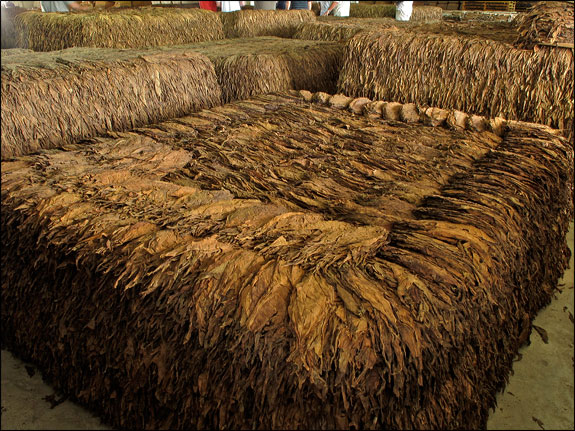Learn all about Cigar Tobacco Fermentation
Posted by ana cuenca on May 06, 2018

Cigar tobacco fermentation is a delicate process that separates the decent cigars from the premium ones. Learn all about the process right here.
Cigar tobacco is distinct from standard cigarettes. It's a better smoke, more full of flavor, and much more effective. Cigars take longer to smoke, giving you more time to enjoy them. And they're a great social lubricant, bringing together groups of "cigar nerds" to enjoy, discuss, and try out cigars.
But there's a trick at the heart of it. A trick we're going to discuss in full, today.
Join us, as we unpack the process of natural fermentation, and how it separates the cigar men from the cigar boys.
Natural Fermentation: What Is It?
Natural fermentation is a process that releases ammonia from tobacco leaves to make them more sociable. It's also known as "curing" the tobacco. It occurs, after the tobacco has been cured and separated, a biochemical process that dissipates moisture in the leaves.
During normal processing, tobacco gets stacked into piles called pylons. Under the pressure of these piles, the tobacco processes itself, naturally. During this time, the temperature in these piles is monitored, carefully, and maintained at between 110 and 115 degrees. The pylons are turned when they reach optimal temperature, with the process going on for as long as it takes for the tobacco to become ready.
At the right time, the pilon is misted and watered down. Over the next 24 hours, the tobacco is aerated. In a romantic gesture at this point, a worker will roll up a leaf and smoke it to determine if the tobacco is ready.
Why It's Important
During this period, under the increased temperature and humidity there's a release of enzymes in the leaf, fermenting it.
The fermentation process triggers the release of tar, nicotine and other important chemicals that work in favor of the cigar. These chemicals bring out a fuller, more rounded flavor in the cigar leaves.
It's not a big leap to compare this fermentation process to the same one in processing wines. For cheeses, kombuchas, wines, and pickles, this is mostly responsible for producing a fuller flavor in the product. With cigars, it's also responsible for the way the nicotine works, producing a more robust smoking experience.
It's also a process that can't be faked, much as many brands may try. This is where fermentation becomes important in distinguishing between good cigars and bad ones. Well-fermented cigars boast flavors with dark, smooth finishes. They taste sweet and earthy, with dark notes to their flavors. Coffee and chocolate, leather, wood, and brown sugar.
Fermentation: For Better Cigar Tobacco
Cigar smoking is all about getting a better experience. With that said, it's important to know you're getting something that's been made with quality techniques.
Fermentation uses humidity, moisture, and pressure to release flavor-enhancing chemicals from cigar tobacco. It's long, complicated and requires a lot of dedication to carry out properly.
The end results, however, make the whole process completely worth it.
Interested in learning more about the exciting world of cigar smoking? Check out some of our other excellent blog pieces and reviews, and get a better smoke today!

